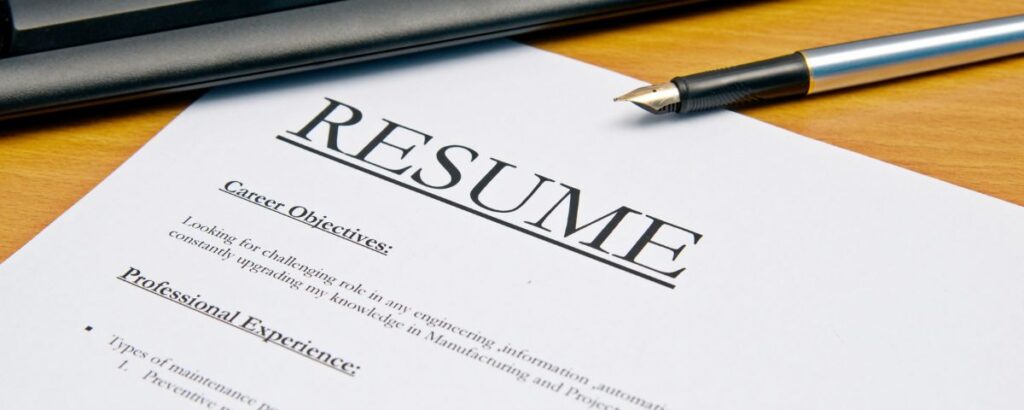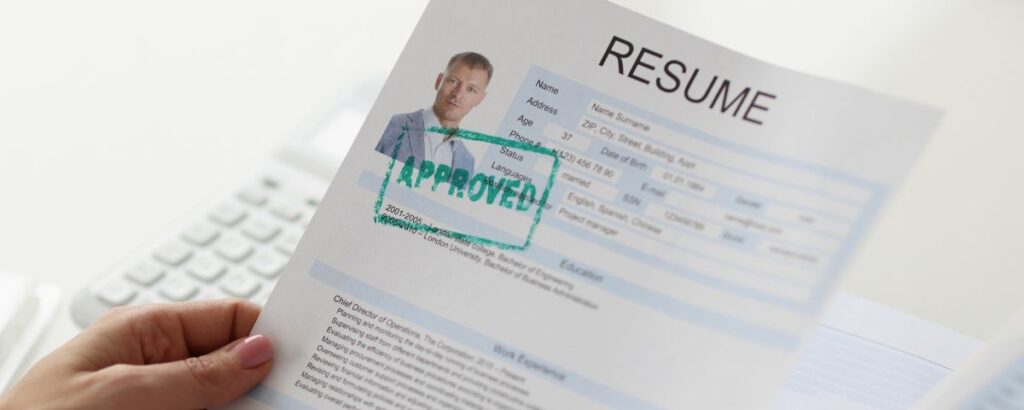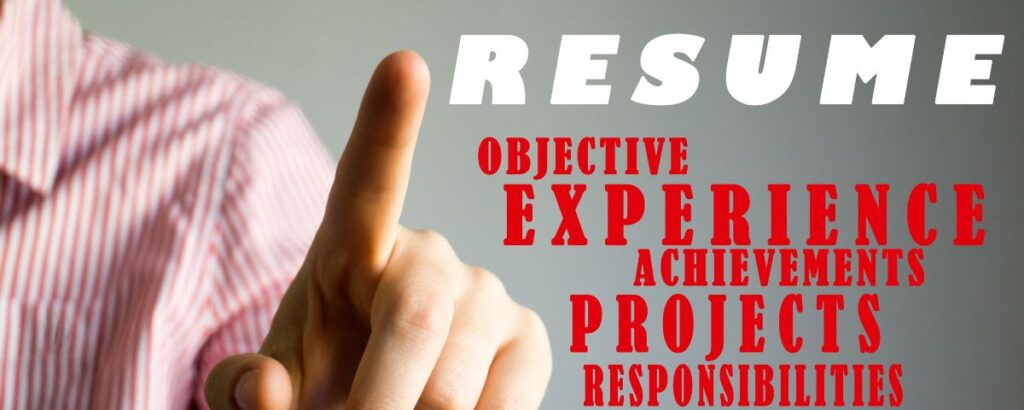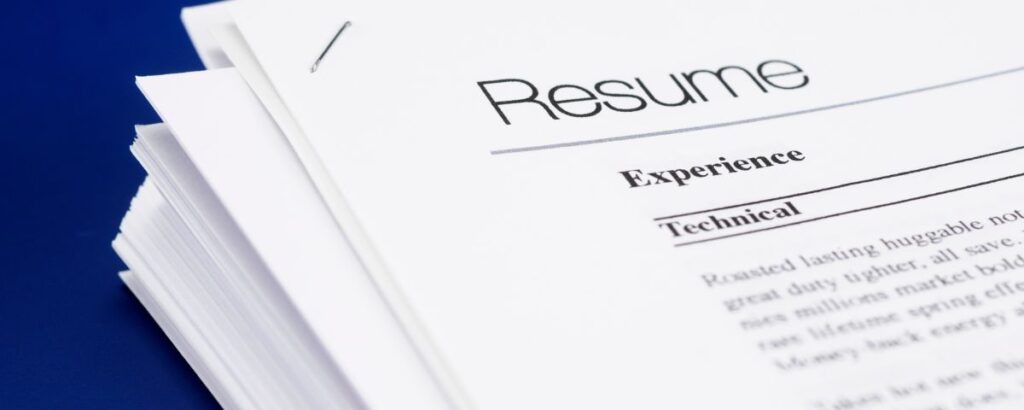
Best Resume Format for Freshers: A Guide to Standing Out
May 24, 2025
CV vs Resume in India: Understanding the Difference
June 6, 2025Essential Guide to Crafting a Resume for Freshers Without Experience
Starting out in the job market without any work experience might feel intimidating. But here’s the truth. Everyone starts somewhere, and your first time resume is your launchpad. Think of it as your personal story told on paper, and focus on including relevant information that matches what employers are looking for. A strong, clean, and well-structured resume for freshers without experience can still speak volumes about who you are and what you bring to the table.
Including a concise resume summary at the top of your resume is essential for making a strong first impression and quickly showcasing your strengths to potential employers.
First things first, go for a professional resume template. Not only does it make your document look polished, but it also helps pass through Applicant Tracking Systems (ATS) that many companies use today. Keep it neat, and avoid flashy fonts or unnecessary design elements.
Now, let’s talk about what really matters, your skills and education. Just because you don’t have job experience doesn’t mean you don’t have value to offer. Start with a powerful summary that highlights your academic achievements, relevant coursework, soft skills like communication and teamwork, and any technical abilities you’ve picked up.
If you’ve done projects, internships, or even volunteering, mention those too. These speak volumes about your initiative and willingness to learn. And don’t underestimate the power of structure. You can go with a functional or reverse chronological format to put your best foot forward.
Your resume isn’t about where you’ve been, it’s about where you’re going.
Introduction to Resume Building

Starting your journey into the job market can feel overwhelming, especially when you’re faced with creating a resume and you have little or no professional experience. But here’s the good news: every job seeker, including entry-level job seekers and recent graduates, has valuable skills and experiences to showcase. The key is to craft a well-written, professional resume that highlights your strengths and makes a memorable first impression on hiring managers.
A professional resume isn’t just a list of jobs, it’s your personal marketing tool. Even if you haven’t held a formal position yet, you can still stand out by focusing on your relevant skills, academic achievements, and relevant coursework. Think about the transferable skills you’ve gained through extracurricular activities, volunteer work, or personal projects. These experiences can be just as impressive to prospective employers as traditional work experience.
Choosing the right resume template is an important first step. There are several resume templates designed specifically for job seekers with limited experience. Simple resume templates keep your information clear and easy to read, while functional resume templates put the spotlight on your skills rather than your professional experience. Combination resume templates offer a balanced approach, allowing you to highlight both your abilities and any experience you do have, making them a versatile choice for many job seekers.
Choosing the Right Resume Template

Finding the perfect layout makes all the difference when you’re crafting a resume where there is almost nothing to show as experience. You want something clean and straightforward. A simple resume template lets your strengths stand out, so hiring managers can spot your skills at a glance.
Next, explore free resume templates from trusted sources. Many online resume builders and certified professionals offer designs that you can tweak to suit your story. By choosing a customizable template, you’ll ensure each section, from education to volunteer work, fits just right.
Moreover, compatibility with applicant tracking systems is key. An ATS-friendly resume template means your document won’t get lost in the shuffle. So, pick a format built to pass these filters and still look sharp on screen and in print.
Using minimal resume templates also saves time. You won’t have to wrestle with margins or fonts. Instead, you can focus on detailing your coursework, internships, or extracurricular projects. After all, that’s exactly how to make a resume with no work experience feel substantial and professional.
Finally, professional templates guide you to highlight what matters most, your transferable skills and academic achievements. With the right design, you’ll step into any interview with confidence, ready to show that a lack of a formal job history doesn’t define your potential.
When selecting your template, make sure it can be downloaded or exported in your preferred format, such as PDF or DOCX, to ensure compatibility and ease of use.
Writing Your Resume for freshers without experience

Kick off your fresh resume with a sharp objective. Keep it under two lines. For example: “Aspiring marketing coordinator eager to leverage strong communication and problem-solving skills to support dynamic teams.” Be sure to include the specific job title you are targeting in your resume objective, and use this section to reflect your career goals. This tells hiring managers exactly where you’re headed and why you’re a great fit.
Next, spotlight your educational university. List your university, degree program, and expected graduation date. Then, add relevant coursework like Digital Marketing Strategies or Data Analysis to hint at the knowledge you’ll bring to the role.
After that, dive into transferable skills. Bullet points work wonders here. You might write:
Led a campus volunteer group of 15 peers, coordinating 10+ community service events and improving team efficiency by 25% through structured planning and delegation.
Presented research findings to an audience of 5+ professors and 30+ peers across 3 academic seminars, enhancing public speaking confidence and receiving positive feedback on clarity and delivery.
Organised 4+ fundraising events, raising over $5,000 for local causes, while developing project management and critical thinking skills through budgeting, team coordination, and problem-solving under tight deadlines.
Notice how each bullet is a mini-story with quantifiable details. Short sentences like “Strong communicator” don’t pack the same punch. Instead, show what you did and what you learned. When tailoring each point, analyse the job ad to identify key skills and requirements, and align your examples accordingly.
Finally, you might wonder how to make a resume with no work experience look recruiter-friendly. Skip the reverse-chronological format, it emphasises gaps. Instead, lean on a functional layout that draws eyes to your skills and projects first. That way, your resume shines, even without a long job history.
Including Relevant Experience

Even if you’re building a resume without showcasing experience, you’ve got plenty to share. Think beyond paid jobs. You can shine a spotlight on class projects, school projects, personal projects, internships, or volunteer work to show off your abilities.
For starters, list any academic or school projects that relate directly to the role you want. Maybe you coded a simple website during a hackathon, worked on a personal project like building an app, or analysed data for a research paper. These achievements tell employers you’re proactive and eager to learn.
Next, don’t forget internships or volunteer gigs. When listing internships, present them effectively on your internship resume by highlighting your responsibilities and the skills you gained. Leading a campus club or helping out at a local charity speaks volumes about teamwork and leadership. And if you’ve ever tutored classmates or organised events, those skills belong on your resume, too.
When you tailor each point to the job description, employers see that you understand what they need. For instance, if the posting asks for strong communication skills, mention how you presented a group project to a crowded lecture hall.
Finally, quantify wherever you can. Saying “Managed social media for a student group, growing followers by 30% in two months” packs a punch. Numbers bring credibility.
That’s how to make a resume with no work experience feel substantial and professional. By focusing on projects, volunteering, and real results, you’ll craft a resume that stands out, even without a long job history. These strategies are especially useful for building a strong first job resume when you don’t have formal work experience.
Describing Transferable Skills

When you’re working on a resume for freshers without experience, transferable skills become your secret weapon. Start by scanning the job description. Which skills keep popping up? Then, highlight those in your skills section and consider creating a dedicated ‘Key Skills’ section to showcase your most relevant abilities.
For instance, soft skills like teamwork or time management show that you can collaborate and meet deadlines. Meanwhile, hard skills such as proficiency in Microsoft Office, basic coding, or technical knowledge demonstrate concrete abilities. Make sure you list both. After all, employers value well-rounded candidates.
Next, illustrate each skill with a quick example.
Instead of writing “good communicator,” try: “Presented monthly reports to a 20-person study group, improving overall project clarity.” That way, you’re not just naming a skill, you’re proving you’ve used it.
Similarly, you could say, “Experienced in market research through a university capstone project, gathering and analysing data from 50+ survey responses.”
Moreover, tailor this section to each job you apply for. If the posting mentions Excel and public speaking, give those skills top priority. When you match your abilities directly to the employer’s needs, you’ll stand out.
Finally, remember that knowing how to make a resume with no work experience is all about confidence. By clearly showcasing what you can do, you’ll transform a simple document into a powerful story of potential.
Creating a Strong Summary

A powerful opening can set the tone for your resume even if doesn’t include any experience. This section is your resume summary, and it should highlight your professional background, even if that background is based on academic achievements, extracurricular activities, or relevant projects. Start with two or three sentences that sum up your academic success, your most relevant projects, and where you want to go next. This is your chance to shine, so choose each word carefully.
For example, you might write: “Recent computer science graduate who led a team project building a mobile app now seeking an entry-level developer role. Proven ability to solve complex problems and excited to contribute fresh ideas.” See how that tells a story? It shows what you’ve done, what you can do, and where you’re headed.
Next, keep it tight. A concise resume summary means recruiters can absorb your highlights at a glance. When you’re wondering how to make a resume with no work experience stand out, this summary becomes your secret weapon. It packs impact without taking up too much space.
Finally, polish it until it shines. Check for typos, awkward phrasing, and unnecessary words. An engaging resume summary is clear and error-free, just like a well-formatted cover letter complements your resume by adding personal flair. With this solid foundation, you’ll enter every application with confidence, showing employers that a lack of formal experience doesn’t limit your potential.
Adding Optional Sections
Think about adding a splash of personality to your resume. Optional sections like certifications or awards can show you’re committed and driven. For instance, if you earned a digital marketing certificate online, list it to highlight your eagerness to learn.
Moreover, don’t underestimate relevant hobbies. Say you teach yourself guitar chords every weekend; this hints at discipline and creativity. Similarly, including extracurriculars such as student government or a volunteer role at a community centre tells employers about your leadership and teamwork skills.
Furthermore, hard skills deserve a spot here, too. If you’ve dabbled in Python or have basic accounting knowledge, create a “Technical Skills” or “Certifications” section. These details reinforce how to make a resume with no work experience look robust. In contrast, soft skills like responsibility or communication shine when paired with real examples in your main sections.
Also, keep each optional section brief and laser-focused on the job you want. If you’re applying for a design internship, list a graphic design award rather than a sports trophy. High school student resume templates often include these extras, making it easier to display educational achievements and volunteer service. For freshers, a well-structured education section is especially important; use it to showcase academic achievements, relevant coursework, awards, and certifications to strengthen your qualifications.
By weaving in the right optional sections, you’ll add depth and character. And ultimately, you’ll craft a resume that feels both unique and professional. Don’t forget to include accurate personal and contact information at the top of your resume, such as a professional email address and up-to-date phone number, to ensure employers can easily reach you.
Finalising Your Resume

Before saving and closing the resume for freshers, take a moment to polish every detail. Read through each line slowly. Catch those sneaky typos, check for grammatical errors, and tweak awkward phrasing. After all, a spotless document reflects your dedication.
Next, make sure your layout guides the eye. Use clear headings like Education, Skills, and Projects and break up text with bullet points. Format your resume correctly to ensure it is visually appealing and easily readable, both in print and online. Remember, recruiters spend only about five seconds scanning a page. If they spot your highlights quickly, they’re more likely to read deeper.
Consistency is key. Stick to one standard font, nothing fancy and keep formatting uniform. That means the same font size for headings, the same indentation for bullets, and matching spacing between sections. A harmonious look tells employers you’re detail-oriented and professional.
Finally, don’t go it alone. Share your draft with a friend or mentor. Fresh eyes can spot missing commas, suggest clearer wording, and point out areas where you’ve shown exactly how to make a resume with no work experience feel impressive. Their feedback will boost your confidence and help you submit a resume that truly stands out.
With these final touches, your document will be crisp, compelling, and ready to prove that zero formal job history doesn’t limit your potential.
Customising Your Resume with no experience

Every time you apply for a new role, tweak your resume so it speaks directly to what the employer wants. First, study the job description and pick out key phrases. Then, weave those words into your skills and project descriptions to show you’re the perfect match.
Next, focus on the functional format. It highlights what you can do, even if it’s your first gig. Arrange sections by skills instead of work history. That way, you demonstrate abilities upfront: communication, teamwork, or coding know-how, for example.
Moreover, make each resume unique. If you’re creating a resume with no experience, tailor it to each job by emphasising relevant skills, coursework, extracurricular activities, or volunteer work. If the ad mentions “social media management,” then talk about your campus club’s Instagram growth. Or, if it demands “data analysis,” describe your final-year thesis where you sifted through survey results. This approach shows you’ve done the homework and you understand how to make a resume with no work experience feel targeted and strong.
Also, don’t shy away from online tools. Many resume builders let you adjust layouts in minutes. They’ll help ensure that underlining your strengths remains quick and painless.
Finally, keep refining. Each role is different. By customising your job resume to each opportunity, you turn a generic document into a powerful sales pitch for yourself. And that’s exactly how you stand out, even as a newcomer. Remember, submitting a matching cover letter along with your job resume further increases your chances by showing you’ve tailored your entire application to the position.
Using Online Resources

When you’re building a resume, online resources can be your best friend. First, try a resume builder that offers customizable layouts and prompts. These tools guide you step by step, so you’ll never wonder how to make a resume with no work experience look professional. Plus, many of them include ATS-friendly formats to boost your chances by ensuring your resume is compatible with an applicant tracking system.
Next, explore free templates and real-life examples. You’ll find designs tailored for students and recent graduates, highlighting sections like projects and skills. By reviewing a resume sample, you’ll learn how to structure your resume and choose the right headings. And because everything’s pre-formatted, you’ll save time and avoid awkward spacing or font issues.
Don’t forget to use online checkers for grammar and style. A quick scan can catch typos or inconsistent punctuation before you hit send. Similarly, browser extensions for readability can help ensure your sentences flow smoothly. When your document reads cleanly, recruiters will breeze through it and notice your strengths.
Finally, read up on the latest advice. Many career blogs and certified professional resume writers share tips on crafting impactful summaries, selecting keywords, and prioritising your achievements. By combining these insights with hands-on tools, you’ll master how to make a resume with no work experience stand out, confidentno-experiencer the next step. Some online resources also guide on using a reverse chronological resume format, which is popular for clearly showcasing your work history.
Avoiding Common Mistakes

Spotting typos and grammatical slip-ups can make or break a resume for freshers. So, take a deep breath and prioritise the sentences. Read it out loud. You’ll catch awkward phrasing that way.
Next, keep things concise. You don’t need a novel. Aim for one page that’s focused and clear. If a bullet point feels unnecessary, cut it. Prioritise quality over quantity.
Also, steer clear of bland buzzwords like “organised” or “team player” without proof. Instead, show what you did. For example, write “organised weekly study sessions for 10 classmates” rather than just “good at teamwork.” Specifics bring your skills to life.
Action verbs are your best friends here. Start bullets with words like “managed,” “designed,” or “created.” This not only shows initiative but also paints a vivid picture of your achievements. And because you’re figuring out how to make a resume with no work experience, these verbs help you sound confident.
Creating a Cover Letter

Writing a cover letter that matches your resume can set you apart. Start with a friendly greeting, then dive right into why you’re excited about the role and how it aligns with your dream job. Show genuine enthusiasm, this is your chance to shine.
Next, tell your story. Briefly explain how your college project sparked your interest in the field. For example, you could describe how leading a volunteer event taught you leadership and organisation. By weaving in examples, you demonstrate that you understand how to make a resume with no work experience feel more compelling.
Then, align your skills with the job description. If the listing mentions “strong analytical skills,” mention your university research project where you sifted through data. Using the employer’s own language shows you’ve paid attention and are ready to contribute.
Keep your cover letter concise. Aim for no more than one page. After all, over half of hiring managers prefer candidates who include a cover letter, as it shows motivation. So, make every sentence count. Tight paragraphs with a clear purpose will keep readers engaged.
Finally, end on a confident note. Thank the hiring manager for their time and express your eagerness to discuss how your fresh perspective can add value. By combining your story, targeted skills, and genuine excitement, you’ll craft a cover letter that complements your resume and highlights your potential.
Resume Examples for Freshers

When you check out real-life resume examples, you’ll see how others organise sections like Education, Skills, and Projects. By studying these samples, you’ll learn how to make a resume with no work experience look polished and professional.
Moreover, pay attention to structure. Notice how each example groups related points under clear headings and uses bullet lists to make key details pop. Then, observe the language choices, strong verbs and specific achievements rather than empty buzzwords. This approach not only looks good but also passes through many Applicant Tracking Systems.
Next, use online resume builders to browse templates and examples in one place. These tools often categorise designs by industry or career level, so you can filter straight to college-friendly, entry-level, or college student resume templates. This is especially helpful for a college student looking for their first job or internship. Plus, they let you swap in your own content quickly, saving precious time.
Additionally, college resume templates can guide you if you’re applying for graduate school, internships, or as a college graduate. These templates highlight coursework, academic awards, and campus leadership roles, elements that matter when you lack formal work history.
Finally, bookmark a handful of examples that resonate with you. Return to them whenever you update your resume. Some examples are also tailored for those seeking a part-time job, making them ideal for students or anyone with limited experience. By learning from others and adapting their best practices, you’ll craft a resume that shines, even with no prior job record.
Conclusion
Crafting a standout resume starts with focusing on what you know and what you’ve done. Showcase your academic achievements, transferable skills, and any hands-on projects you completed during college. Education and extracurriculars can speak just as loudly as a paid position.
Next, pick a professional resume template that looks clean and modern. Then, tailor your resume to each job application by weaving in keywords from the posting. This shows you understand the role and helps your resume pass through Applicant Tracking Systems.
Make sure your document is well-structured. Use clear headings, bullet points, and consistent formatting throughout. Keep it concise, aim for one page and proofread carefully to eliminate all errors. A polished, error-free resume shows you’re detail-oriented and serious about the opportunity.
Finally, lean on online resources to keep learning and improving. Browse resume examples for freshers, experiment with resume builders, and read expert articles on best practices. By combining your unique story with proven templates and feedback, you’ll master how to make a resume with no work experience shine. With these tips in hand, you’ll step confidently into the job market and take the next big step in your career.




